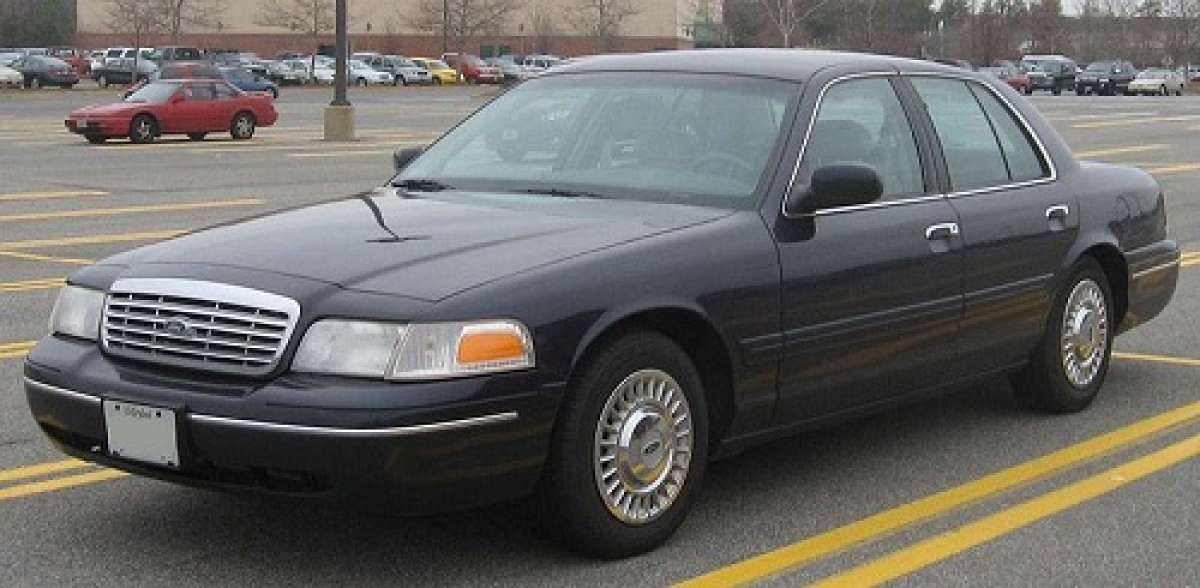Nearly 10 million of the so-called Panther Platform vehicles – Crown Victoria, Mercury Grand Marquis and Lincoln Town Cars – have been built since 1979. The need for greater fuel economy has slowed sales over recent years. The Crown Victoria and Town Car only get 24 miles per gallon on the highway. That’s not bad for a full size sedan, but a figure today equaled by some large SUVs.
Production halted last Thursday as the last model ever to be built rolled off the manufacturing line at Ford’s St. Thomas Assembly plant in Ontario, Canada.
"Production levels at the plant have declined by 60 percent in the last decade as customer preferences shifted to smaller, more fuel-efficient vehicles," Ford remarked in a published announcement.
The Ford Crown Victoria has only been available for fleet sales, mainly in police and taxi form, as well as for rental cars since the beginning of the 2008 model year. Along with its Mercury and Lincoln counterparts, it was the only full-frame rear-wheel-drive passenger car still built in North America.
It has been one of the last remaining US vehicles still featuring a column-mounted gear shift and two-bench, six-passenger seating. This was once the dominant format for US-manufactured vehicles since the 1950s, but now has been replaced in front by the bucket seats and console mounted shifter made popular by imports.
Since the Chevrolet Caprice was discontinued in 1996, Ford’s Crown Victoria held a near-monopoly as a police pursuit vehicle in North America. The Panther platform is was based on has seen two revisions since it debuted in 1979.
Though modern front-wheel drive vehicles have been popular with consumers, they failed to challenge the Crown Victoria's supremacy as a taxicab, fleet vehicle and police car where durability and cost performance are valued over fuel efficiency.
The Ford Crown Victoria remained popular thanks to its rugged rear-wheel drive layout and V8 powertrain, both beneficial to police driving techniques. As one of the few remaining cars with body-on-frame construction, it enabled repairs after minor accidents without straightening the chassis.
More recently, the Chevrolet Impala and Dodge Charger, featuring unibody construction, have begun to challenge Ford’s dominance with increasing use among police and taxi fleets since their re-introduction.
Ford is offering $100,000 cash payments or relocation offers, among other programs, for the workers at the St. Thomas Assembly plant, according to a post by Peter Valdes-Dapena on CNNMoney.com. A closure agreement between Ford of Canada and the Canadian Auto Workers union was reached in 2009 , they said.
Only 80,000 Ford Crown Victorias and Town Cars were built and sold last year, according to Tony Gratson, Ford's manager for government fleet sales. Those figures couldn’t support a factory capable of building a quarter million cars a year.
Most cars today are built with unibody engineering, meaning the sides and roof of the body have a role in maintaining rigidity. Panther Platform vehicles were built with the traditional body-on-frame design mostly used in pickups today because it bounces back better from hard, punishing use.
"You couldn't kill it no matter what you did to it," Ford spokesman Octavio Navarro said of the Ford Crown Victoria. Nevertheless, what hard use couldn’t do, a changing world and economy have, as a legendary vehicle ends its long production run.
Image source of Ford Crown Victoria LX: Wikipedia





